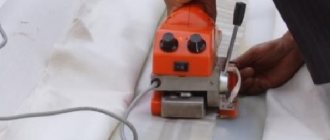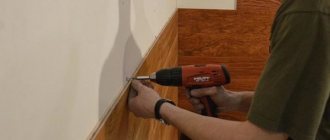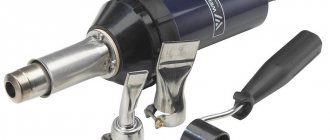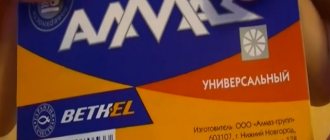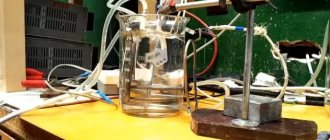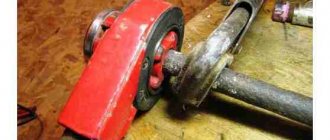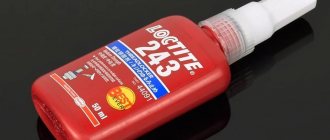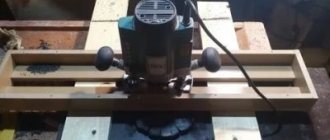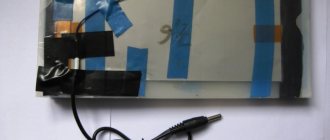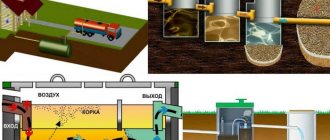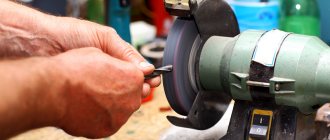Welding of polyethylene can be performed both in ordinary and industrial conditions. Its implementation is most popular when creating coverings for greenhouses, where pieces of material are joined using contact heating. Soldering may also be needed for book covers, packaging bags, and other needs.
Film welding scheme.
Welding of polyethylene film is carried out by bringing the polymer material into a viscous state. To do this, its edges are heated to a temperature at which melting begins, then they must be connected and squeezed tightly. To do this correctly, you can use a device specially designed for this purpose for welding polyethylene. The operation of such devices can be carried out in several modes, which are set depending on the thickness and characteristics of the polymer and its type.
Types of polyethylene compounds
The simplest and least expensive method for joining polymer materials is the so-called contact welding of polyethylene. In this way, reliable connections are formed that are preserved during subsequent operation.
Ultrasonic welding diagram.
To perform resistance welding, the joined edges of the polymers are heated with "hot air" or a "hot wedge" until they melt. Compression and seam formation are carried out by roller elements specially designed for clamping. The resulting seam will be single or double; it has good strength.
A method called “hot air” is a heated air stream that softens and melts the polymer. For the same purpose, a heating part made of metal is used - a “hot wedge”. Contact between the elements and the polymer is carried out both from the outside and from the inside, and good strong seams are formed.
In addition to the contact connection method, extrusion welding can also be used. When choosing this method, the molten polymer is supplied under pressure, the surfaces connected to each other change their state from dense to viscous, and squeezing helps to fasten them together.
Welding parameters for polyethylene and polypropylene products
Materials Melt Flow Index (MFR)
Welding of high density polyethylene (PE-HD, HDPE)
Products made of high-density polyethylene of melting group with index 005 (MFR 190/5: 0.4-0.7 g/10 min.), group 010 (MFR 190/5: 0.7-1.3 g/10 min. ) or groups 003 (MFR 190/5: 0.3 g/10 min.) and 005 (MFR 190/5: 0.4-0.7 g/10 min.) are suitable for welding with each other. This is confirmed by the standards DVS 2207 part 1 (DVS - German Welding Association) and is confirmed in the documents of the DVGW (German Gas and Water Union).
Welding of polypropylenes: polypropylene homopolymer (PP type 1, PP-N) and polypropylene block copolymer (PP type 2, PP-C, PP-R)
The weldability of polypropylenes is indicated within the melting index group 006 (MFR 190/5: 0.4-0.8 g/10 min.). This is confirmed by DVS 2207 part 11.
Temperature of the welding process of polypropylene and polyethylene
Hot gas welding
| Air, l/min. | Temperature in the nozzle ˚ C | Gas speed cm/min | ||||
| Nozzle diameter, mm | Speed nozzle diameter | |||||
| 3 | 4 | 3 | 4 | |||
| Welding polyethylene | 60-7060-7060-70 | 300-340300-340270-300# | 10-1510-15- | approx. 10 approx. 10- | 50-6050-6025-30 | 40-5040-5020-25 |
| Welding polypropylene | 60-7060-7060-70 | 280-320280-320280-320 | approx. 10 approx. 10 approx. 10 | 50-6050-6050-60 | 40-5040-5040-50 |
Welding with a manual extruder
| Extrudate temperature measured at the nozzle outlet, º C | Air temperature measured at the warm air nozzle, ºC | Air quantity, liters/min. | |
| PE hardPP | 200-230200-240 | 210-240210-250 | 350-400350-400 |
Effect of humidity
Products being welded (sheets, plates) and welding rod made of polyethylene and polypropylene can, under certain conditions, absorb moisture. Studies by a number of manufacturers have found that polyethylene and polypropylene welding rods absorb moisture depending on the material and environment. In extrusion welding, the presence of moisture may appear in the form of pits in the weld or a rough weld surface. This phenomenon intensifies with increasing seam thickness.
In order to prevent such undesirable consequences, the following recommendations have been developed:
- Installation of moisture and oil separators in the air supply system,
- Avoidance of significant temperature differences between parts being welded (condensation moisture),
- Storing the welding rod in a dry place if possible,
- Drying the welding rod at a temperature of 80°C for at least 12 hours,
- Welding wide seams (>18mm) in several passes.
Depending on the type of heating of polypropylene and polyethylene, the following types of welding are distinguished:
- Welding thermoplastics with hot air (hair dryer)
- Welding thermoplastics with an extruder
- Welding thermoplastics using a heating element
- High frequency welding of thermoplastics
- Laser welding of thermoplastics
How polymers are joined using a “hot wedge”
In production conditions, it is possible to weld pieces of polymer using a special apparatus. It is used to work with such types of materials as HDPE, PVC, polypropylene and others like them.
Iron attachment diagram.
This device has the following operating principle: the wheels are driven from the engine through a gearbox, and a “hot wedge” is placed on a tripod between arranged sheets of material. The thermostat of the device puts into operation a system that automatically maintains the desired temperature. This helps ensure greater accuracy and reduces the likelihood of large temperature fluctuations. The operating speed is controlled automatically, and a relatively stable voltage is ensured in the electrical circuit.
Such equipment meets safety standards and provides greater ease of use. Welding is carried out at a certain speed, which can be adjusted manually. The required pressure is transmitted through the pressure rollers using a special lever.
The device allows you to obtain a double seam on dense material, the strength of which is approximately 85%. The process is carried out automatically; you only need to manually adjust the temperature and speed of the working element.
The “hot air” device can be described as a type of industrial hair dryer. Its advantage is lightness. The device is suitable for long-term use. The mechanism is very powerful, and therefore the effect is quite effective. Its use is possible for such types of material as HDPE, PVC, LDPE film.
Gluing film in a greenhouse
The methods for gluing film in a greenhouse will be the same as for individual sheets:
- The main method: overlaying elements on top of each other. Then they are clamped, covered with paper and held at the junction with a blowtorch or other source of open flame.
- A less reliable method is gluing. The material being processed is degreased, fixed, and glued. It should remain in this form until the glue layer has completely hardened.
- If you need to repair a gap in a greenhouse that is already in use, then use thread stitching. During operation, the film becomes contaminated with dust and deforms under the rays of the sun, so the weld will be weak due to contamination, and the glue may crack at low temperatures. The rupture site is sealed with an adhesive plaster and tied with threads along the length of the rupture.
If possible, use welding as the most reliable method of soldering. At the correct melting temperature (not lower than 120°C), the seam will be as reliable as possible. If this is not possible, then use special glue. Also keep in mind that the denser the film, the less likely it is to accidentally rupture during operation.
How to weld at home
Diagram of a hot wedge welding machine.
Manual welding of polymers cannot be done without the appropriate equipment and tools, which in most cases can be made independently from outdated household appliances.
Even a regular electric iron equipped with a temperature regulator will do the simplest thing. A soldering iron powered by electricity would also be useful.
Using an iron, the edges of the PVC film are joined as follows. A block made of wood and properly planed is placed on the table. The edges of the polymer intended for welding are placed on it - they should protrude beyond the lining material by approximately 2 cm.
Lay sheet material on top of the film that is difficult to melt: it can be fluoroplastic, paper, newspaper. Be careful not to char the paper while working.
To speed up the joining of the edges of the parts, after heating the material, you must immediately cool this section of the film - prepare in advance a piece of wet cloth, which, after heating, you need to blot the soldered polymer.
The iron thermostat should be set to 120-150°C. The temperature of the device, powered by electricity, is the main technological indicator that serves for the correct connection of polyethylene.
If you have never welded polyethylene in the manner described before, it is better to practice a little first. Place the sheets of film intended for welding overlapping on a flat surface, for example, on a table top, cover the top with a sheet of newspaper or any paper. Heat the iron, tilt it slightly and move it over the place where the seam should be. If the connection is of poor quality or even does not form, check the temperature indicator.
Few people manage to get a reliable and beautiful seam the first time - be patient, and gradually everything will work out.
Methods for welding polyethylene film
The melting point of polyethylene depends on its thickness. When welding polyethylene at home, it is necessary to follow the technological regime. Polyethylene is a very thin material, from 30 to 200 microns. How to weld it to form a strong connection:
- it is necessary to heat the equipment to the required temperature (from 130 to 160°C);
- the optimal welding speed is selected; if it is slow, the polymer is damaged; if it is high, a strong seam will not be formed.
- Only homogeneous materials are installed; they must match in texture, thickness, and density;
- the surface in the seam area is well cleaned, foreign inclusions disrupt the tightness of the joint;
- Only intact areas are welded; it is necessary to retreat at least 5 mm from the edge, otherwise a homogeneous structure will not be obtained.
The marking template is placed under a transparent film or placed on top, then the paper protects the polymer and is removed after completion of the work. It does not affect the quality of the seam, since it does not have time to stick tightly. Only microscopic fibers remain on the surface.
Using attachments for working with an iron
Welding of polyethylene sheets can be carried out using special attachments that are mounted on an electric iron. This accessory part is made of sheet aluminum. The base of the nozzle is flat, at the bottom there are relief elements - ribs, which are directly involved in the process.
Scheme for welding polyethylene film using an electric iron: 1 – table (stand), 2 – rail, 3, 4 – film panels, 5 – lining, 6 – iron.
The use of the part contributes to the formation of two reliably soldered strips located in parallel on the material.
The nozzle is very easily fixed on the soleplate of the iron: for this purpose it has special petals that must be folded under the base of the device.
To operate, it is better to set the thermostat of the device to the mark intended for working with linen fabrics.
To determine that the nozzle has heated up to the desired state, you can apply a wet cloth to it. If you hear the hissing sound of liquid evaporating, it's time to get to work.
The “ribs” of the nozzle are installed at the junction of the edges of the film on top of the laid paper, then the device is slowly moved over the place intended for connection. It turns out to be a double seam.
DIY film soldering
Polyethylene pipelines are installed in two ways: using fittings and flanges or several types of welding.
The connection requires special fittings (couplings and sockets) and without them. For pipes with a wall thickness less than 4.5 (diameters 50-110 mm), welding using fittings is used; for larger pipes with a thicker wall, butt welding and extruder welding are acceptable.
Diffusion
The diffusion method involves heating the ends to a viscous flow state. The prepared ends of the workpieces are joined and slightly compressed. Movable polymer molecules, under the influence of pressure, move into the parts being connected, mix, freeze in a new position when cooled, form new chemical bonds and ensure reliable adhesion of the pipes to each other.
Bell method
Not the most typical way. There are two options for implementation: using socket pipes and couplings. The method itself is reminiscent of welding polypropylene pipelines: the socket or coupling and the workpiece are heated using a soldering iron with a special nozzle.
Then the workpiece is inserted into the socket of another pipe or coupling, fixed, pressed and held. Welding time – 20 seconds. If couplings are used, then the second pipe is soldered into the coupling in the same way. The cost of couplings is low; products with a socket are rarely found in stores.
The connection is reliable and durable; small diameters can be welded.
Butt welding
Before carrying out work, cut off the polyethylene pipe strictly perpendicularly and thoroughly clean the ends. Then fix the pipe in the welding machine and carefully center it.
Cool the joint, then remove the machine. The work has its own subtleties; it requires two people.
Extruder welding
Extrusion - welding using a small apparatus from which molten polyethylene is extruded under pressure. Raw materials in the form of rods or granules are loaded into the extruder.
Extrusion is used on pressure communications with a wall thickness of more than 6 mm, but it can also be used to patch non-pressure sewer pipelines with a thinner wall. The connection point is heated by a stream of hot air.
It is advisable to chamfer the ends.
Welding with a soldering iron
An ordinary electric soldering iron is also suitable for bonding film at home. It is best to put a tip with a student or poster pen made of metal on its sting. If the polymer is burned through, the tip is slightly moved from the tip of the device - this reduces the heat transfer area.
Soldering is more reliable if you attach special rollers to the soldering iron. The tip is ground off until it stops, a groove is cut in the center of the end, for which a hacksaw is used. You will need a copper disk with a diameter of 1 cm (those who are serious about building such a device can grind it themselves).
Drill a hole with a diameter of approximately 5 mm to attach the axle, insert the disc into the slot made and secure it. It should rotate freely. To ensure an even weld, guide it along a ruler. The device must be guided to the point where the seam ends, without tearing it off, with pressure. This approach is most often used for sealing bags. To get a beautiful seam, practice a little on unnecessary pieces.
How to choose a bag sealer
To choose the right bag sealer, you need to consider several points:
- packaging material. LDPE or HDPE polyethylene, polypropylene, BOPP, multilayer film - not every machine can solder these polymers. Therefore, it is important to read the instructions for use;
- film density. The device is designed for a certain thickness of the package. It is better to take a device with high density parameters, taking into account the folds of the package;
- package size. One machine can seal bags of different widths and lengths;
- view of the finished seam. The seams can be cut, flat, embossed, or euro-seams;
- engraving. You can put a logo, production date, series, batch number or other required information on the soldered seam;
- presence of a thermal knife. If you need to automatically cut off excess parts of the package or make the packaging look perfect, you can look for devices equipped with a mechanical knife;
- sealing speed. If you need a small number of sealed bags, a manual tabletop sealer is suitable, and if the scale of production is large, a conveyor machine would be the best option.
